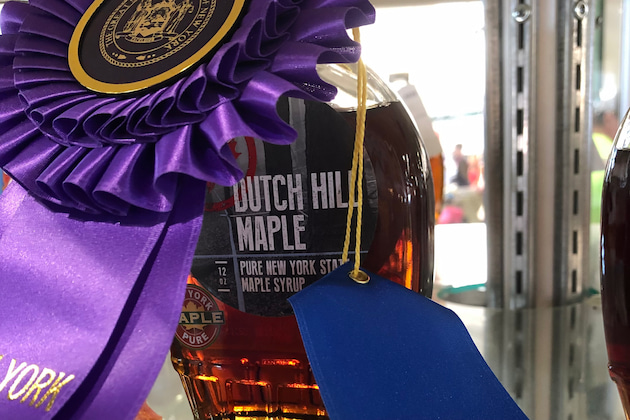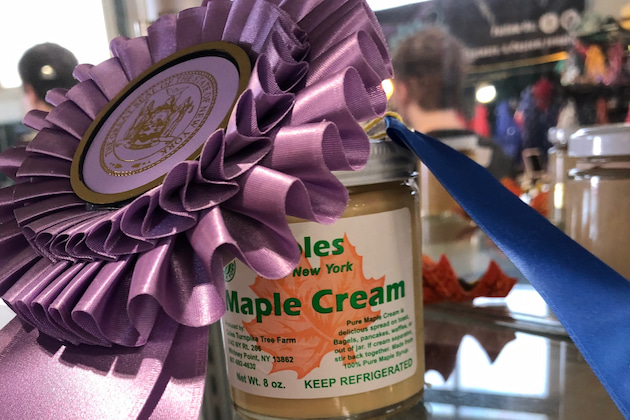UVM Proctor Page
Sugarmakers are urged to focus on quality, especially for fair contests
Double check fair judging contest entries
By PETER GREGG | JULY 11, 2023
BUCKLAND, Mass.—Sugarmakers are urged to focus on quality, and double check your syrup for fair contest entries.
“Quality sometimes takes a backseat to overall production,” said Mark Isselhardt, UVM Extension Maple Specialist and the guest speaker at the Massachusetts Maple Producers Association annual meeting.
Isselhardt, who is a frequent syrup tasting judge at various contests, made a point about the disqualification rates for entries.
He said at some recent judging contests there was a 62 percent rejection rate.
At the Chittenden County Fair in Vermont, 15 entries were rejected out of 24.
At the Vermont Maple Festival in St. Albans last year, Vt. 45 entries were rejected out of 91.
“Clearly we’re missing the mark,” he said.
He also pointed out recent Vermont Agency of Agriculture inspection reports where upwards of 49 percent of the syrup inspected on store shelves in the state were out of compliance, mostly for color.
“Mistakes happen,” Isselhardt said. “Learn from them and make changes.”
Isselhardt told producers to focus on the four key components of making good syrup—color, clarity, flavor and density.
Mother Nature contributes to some off-flavor problems, but sugarmaker practices also are a big factor. Practices like waiting too long to boil sap in warm weather, for example.
“Some issues are a combination of mother nature and processing mistakes,” he said.
At the end of the season, sugarmakers should be keeping a keen eye on changes to the sap and flavor. If a chocolate “Tootsie Roll” flavor is detected, that is buddy syrup.
Sanitation in the woods is a great place for sugarmakers to make changes, if necessary. Make sure tubing is installed correctly and functioning properly, he said.
“Poorly installed tubing reduces sap flow and quality,” he said. “Sap is a great medium for growing microbes.”
He also jumped on what has been a running theme of the maple schools the past few months—making sure hydrometers are tested and calibrated correctly.
“Hydrometers are the best way to check syrup at hot temperature,” he said.
Other tips: Isselhardt said to keep canning equipment clean, keep containers protected from debris and check all containers before filling.
Most importantly, sugarmakers were encouraged to do one last simple test:
“Taste every batch,” he said.

































